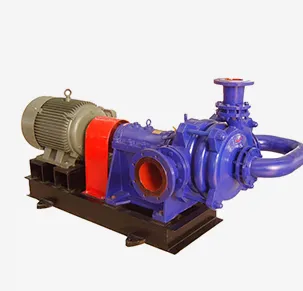Kurdish
- Afrikaans
- Albanian
- Amharic
- Arabic
- Armenian
- Azerbaijani
- Basque
- Belarusian
- Bengali
- Bosnian
- Bulgarian
- Catalan
- Cebuano
- Corsican
- Croatian
- Czech
- Danish
- Dutch
- English
- Esperanto
- Estonian
- Finnish
- French
- Frisian
- Galician
- Georgian
- German
- Greek
- Gujarati
- Haitian Creole
- hausa
- hawaiian
- Hebrew
- Hindi
- Miao
- Hungarian
- Icelandic
- igbo
- Indonesian
- irish
- Italian
- Japanese
- Javanese
- Kannada
- kazakh
- Khmer
- Rwandese
- Korean
- Kurdish
- Kyrgyz
- Lao
- Latin
- Latvian
- Lithuanian
- Luxembourgish
- Macedonian
- Malgashi
- Malay
- Malayalam
- Maltese
- Maori
- Marathi
- Mongolian
- Myanmar
- Nepali
- Norwegian
- Norwegian
- Occitan
- Pashto
- Persian
- Polish
- Portuguese
- Punjabi
- Romanian
- Russian
- Samoan
- Scottish Gaelic
- Serbian
- Sesotho
- Shona
- Sindhi
- Sinhala
- Slovak
- Slovenian
- Somali
- Spanish
- Sundanese
- Swahili
- Swedish
- Tagalog
- Tajik
- Tamil
- Tatar
- Telugu
- Thai
- Turkish
- Turkmen
- Ukrainian
- Urdu
- Uighur
- Uzbek
- Vietnamese
- Welsh
- Bantu
- Yiddish
- Yoruba
- Zulu
Telephone: +86 13120555503
Email: frank@cypump.com
تشرینی یەکەم . 05, 2024 09:37 Back to list
Engine-Powered Slurry Pump Options Available for Immediate Purchase Now
Engine-Driven Slurry Pumps A Comprehensive Overview
In the realm of industrial equipment, engine-driven slurry pumps hold a significant place due to their robust design and efficiency in handling abrasive and viscous materials. These pumps are particularly valuable in sectors such as mining, construction, and wastewater management, where the transport of slurries—mixtures of solids and liquids—is a common requirement. This article delves into what engine-driven slurry pumps are, their applications, benefits, and considerations when purchasing one for your operations.
Understanding Engine-Driven Slurry Pumps
An engine-driven slurry pump is a mechanical device powered by an internal combustion engine, typically diesel or gasoline. Unlike electric pumps that may be restricted by power supply limitations, engine-driven pumps offer enhanced mobility and autonomy, making them ideal for remote locations where electricity may not be readily available. They are engineered to handle challenging slurries, which can consist of sand, gravel, coal, or other solid particles mixed with water or other liquids.
Applications of Engine-Driven Slurry Pumps
The versatility of engine-driven slurry pumps makes them suitable for various applications. In the mining industry, these pumps are essential for transporting tailings—waste materials left over after ore extraction. They can also be used in dredging operations, helping to remove sediment from water bodies. In construction, these pumps facilitate the movement of concrete slurries and other mixtures, ensuring efficient project completion. Additionally, wastewater treatment facilities utilize these pumps to handle sludge, providing an effective solution for managing waste.
Advantages of Engine-Driven Slurry Pumps
1. Mobility and Flexibility One of the standout features of engine-driven slurry pumps is their portability. These pumps can be mounted on trailers or other mobile platforms, allowing them to be easily transported to various job sites. This flexibility is particularly beneficial in industries where operations frequently change location.
engine-driven slurry pump available for purchase at ...

2. Power and Performance Engine-driven pumps typically offer higher power output compared to electric models, enabling them to pump denser slurries and operate under more demanding conditions. This makes them a robust choice for heavy-duty applications.
3. Reliability With fewer components than electric pumps, engine-driven slurry pumps are often more reliable in remote locations. They can function effectively in harsh environments, including extreme weather conditions, where electric pumps may fail.
4. Cost-Effectiveness In areas lacking electricity infrastructure, engine-driven pumps can be more cost-effective as they do not require extensive electrical wiring or generator systems.
Considerations When Purchasing an Engine-Driven Slurry Pump
When considering the purchase of an engine-driven slurry pump, it is crucial to evaluate several factors. First, assess the specific application and the type of slurry you will be handling. Different pumps have varied capabilities in terms of particle size and viscosity tolerance. Additionally, consider the engine's power and fuel efficiency, as these will impact operating costs.
Maintenance requirements should also be a priority; choosing a model with easy access to parts and reputable support can save time and money in the long run. Lastly, look for a pump with a proven track record and positive user reviews to ensure you are investing in a reliable piece of equipment.
In conclusion, engine-driven slurry pumps are an invaluable asset in managing slurries across various industries. Their portability, power, and reliability make them an excellent choice for applications in challenging environments. By carefully considering your specific needs and conducting thorough research, you can find the perfect engine-driven slurry pump to enhance your operations.
-
Horizontal Split Case Pump with GPT-4 Turbo | High Efficiency
NewsAug.01,2025
-
ISG Series Pipeline Pump - Chi Yuan Pumps | High Efficiency, Durable Design
NewsAug.01,2025
-
Advanced Flue Gas Desulfurization Pump with GPT-4 Turbo | Durable & Efficient
NewsJul.31,2025
-
ISG Series Vertical Pipeline Pump - Chi Yuan Pumps | Advanced Hydraulic Design&Durable Construction
NewsJul.31,2025
-
ISG Series Vertical Pipeline Pump - Chi Yuan Pumps | Energy Efficient & Low Noise
NewsJul.31,2025
-
pipeline pump - Chi Yuan Pumps Co., LTD.|High Efficiency&Low Noise
NewsJul.31,2025










